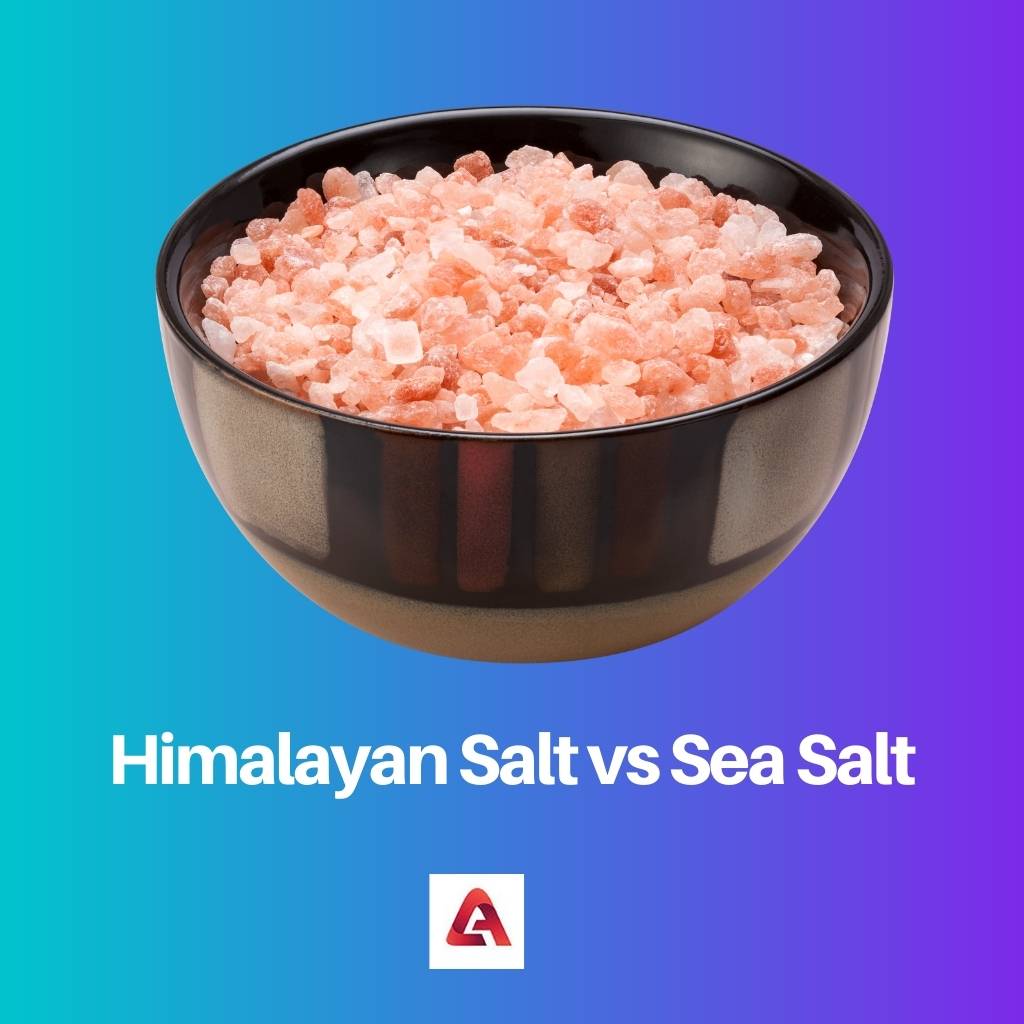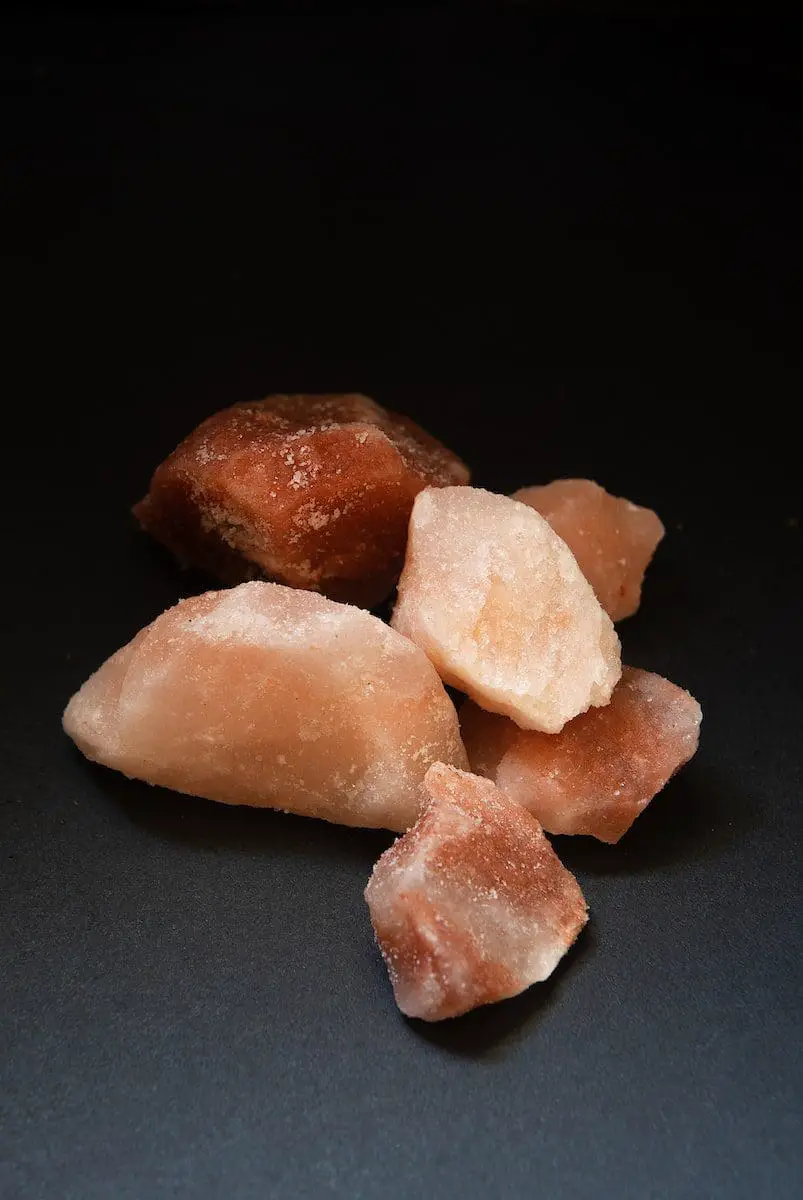Salt is a chemical compound called sodium chloride (NaCl). It comprises 40% of sodium and 60% chloride. Salt is an essential mineral compound for both human and animal health.
Himalayan Salt and Sea Salt are the two different types of Salt. Moreover, They may have variations in color, texture, taste, and health benefits.
Key Takeaways
- Himalayan salt is mined from the Khewra Salt Mine in Pakistan, while Sea salt is obtained by evaporating seawater.
- Himalayan salt has a pinkish hue due to iron oxide, while Sea salt comes in various colors depending on its source and impurities.
- Himalayan salt has a slightly milder taste and lower sodium content than Sea salt.
Himalayan Salt vs Sea Salt
Himalayan salt, pink in color, is a type of rock salt mined from the Khewra Salt Mine in Pakistan, containing various minerals and touted for its potential health benefits. Sea salt is produced through the evaporation of seawater and tends to contain traces of minerals from the ocean, such as zinc and potassium.

Himalayan Salt is known as pink salt because of its natural pink color due to the high amounts of minerals present in it.
Sea Salt is the most widely used salt across the globe due to its great availability and popularity. Sea Salt is extracted through the evaporation of seawater.
Comparison Table
| Parameters of Comparison | Himalayan Salt | Sea Salt |
|---|---|---|
| Extraction | Himalayan Salt is extracted from the salt mines of the Himalayan mountains through traditional mining methods. | Sea Salt is extracted from the evaporation of seawater. |
| Impurities | The impurities present during extraction are purified before packaging. | No impurities are present due to the purification process during evaporation. |
| Mineral Content | Himalayan Salt has high mineral contents such as calcium, iodine, sodium, zinc, and many more. | During the purification process Sea Salt losses its minerals. |
| Color | The color of the Himalayan Salt may vary from white to dark orange or pink. | Sea Salt is white |
| Texture | Himalayan Salt can be found in big blocks which are then made into small blocks or fine forms. | Sea Salt can be found in coarse or fine forms. |
| Heath Benefits | Bone strengthening, improve the thyroid and supports the vascular system. | Reduces inflammation, asthma, acidity, and diabetics. |
What is Himalayan Salt?
Himalayan Salt is the oldest salt extracted through traditional methods from the Himalayan mountains near the Pakistan region.
Himalayan has many health benefits, such as it reduces muscle cramps, supporting the vascular system and thyroid glands, promoting bone strengthening, improving kidney health, reducing infections, and regulating the overall body mechanism.
Himalayan Salt can be used in manufacturing soaps, scrubs, and toothpaste as it is highly beneficial for glowing skin and maintaining oral health.
Himalayan Salt is known as pink salt or rock salt. It can be used in candles and salt lamps as it gives a refreshing fragrance.

What is Sea Salt?
Sea Salt is one of the most important salt varieties across the globe. Due to its high demand in cooking, cleaning, and other industries, large-scale production of Sea Salt has been manufactured every year.
Sea Salt may contain chemicals and other harmful substances, such as heavy metals and plastics, that are not removed during extraction.
Sea Salt is rich in iodine and sodium chloride, an essential element that regulates brain and thyroid functions and maintains the fluid balance and blood pressure in the body.
Sea Salt is used as the main ingredient in manufacturing toothpaste and scrubs as it prevents cavities, improves oral health, and provides smooth and supple skin.

Main Differences Between Himalayan Salt and Sea Salt
- Himalayan Salt can be found in small blocks or fine forms, while Sea Salt can be found in coarse or fine forms.
- Himalayan Salt is the purest salt, while Sea Salt may contain chemicals and other harmful substances.

- https://onlinelibrary.wiley.com/doi/abs/10.1111/j.1745-459X.2010.00317.x
- https://www.sciencedirect.com/science/article/pii/S0168583X19304999
- https://search.proquest.com/openview/010e066cfbfd201e4d4e5ea22d6c14be/1?pq-origsite=gscholar&cbl=2030010
- https://agupubs.onlinelibrary.wiley.com/doi/abs/10.1029/2003JD003405@10.1002/(ISSN)2169-8996.ACEASIA1



